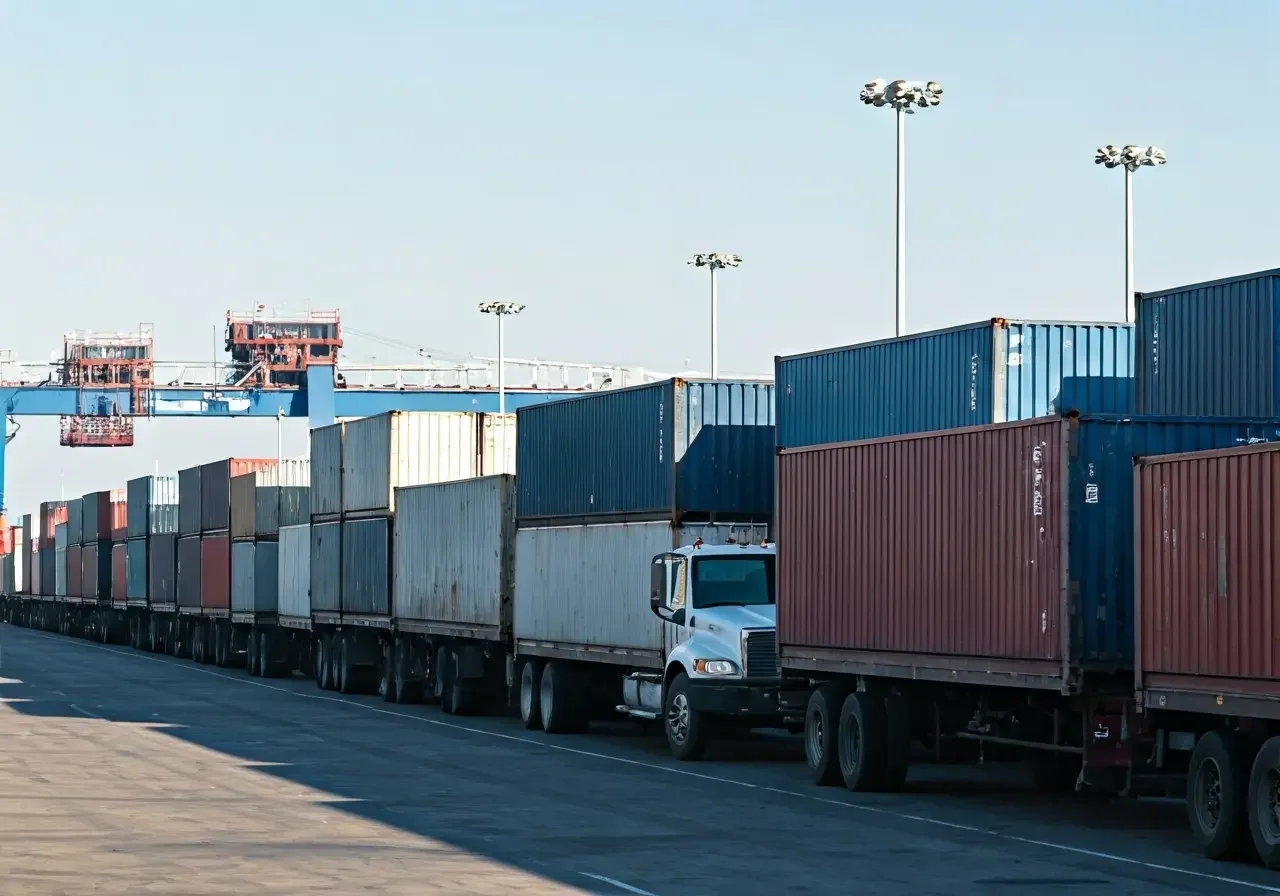What Is Los Angeles Drayage and Why Does It Matter?
Los Angeles drayage might not be a term you're familiar with, but it's an essential part of the logistics industry, especially in a bustling port city like Los Angeles. In this blog, we'll break down what drayage is, its significance, and how it impacts the smooth flow of goods in and out of the city.
What Is Drayage?
Drayage refers to the transportation of goods over short distances, particularly from ports to nearby warehouses or distribution centers. It's a critical link in the shipping chain, particularly in bustling port cities like Los Angeles.
The term 'drayage' originates from the Latin word 'tragere,' meaning 'to draw or pull.' Historically, it was all about horses and carts transporting goods over these short distances. Today, modern trucking has taken over, becoming a vital aspect of logistics by bridging the gap between long-haul shipping and last-mile deliveries.
In addition to being a logistical necessity, drayage also supports various industry sectors, including retail, manufacturing, and e-commerce. As consumer demands shift towards faster delivery times, the efficiency of drayage becomes even more critical, underscoring its importance in the overall supply chain.
Key Components of Drayage
Drayage operations involve specialized trucks, skilled drivers, and coordinated logistics to ensure timely and safe delivery of goods. Efficiency in these components is essential for smooth drayage operations.
Specialized trucks, often optimized for container hauling, form the backbone of drayage operations. These vehicles are designed to navigate the tight spaces and demanding environments of busy ports, ensuring timely pickups and drop-offs. The coordination between trucking companies and port authorities is key to maintaining the flow of goods.
Skilled drivers are another crucial component. They must not only possess technical driving skills but also a comprehensive understanding of the port's operations and regulations. Ensuring the safety and security of the cargo while avoiding delays is part of the daily challenge they face.
Lastly, logistical coordination includes everything from scheduling to routing, ensuring that all parts of the operation are synchronized. This coordination minimizes wait times and maximizes throughput, which is essential for meeting the high demands of businesses relying on quick turnarounds.
Why Los Angeles?
Los Angeles is a major gateway for international trade, making drayage especially critical here. The port of Los Angeles is one of the busiest in the world, handling massive volumes of cargo that require efficient drayage services.
Being home to the largest port complex in North America, Los Angeles plays a significant role in global commerce. The port of Los Angeles and the adjacent port of Long Beach together handle over 40% of all containerized imports in the United States. This immense volume of trade necessitates a robust drayage infrastructure to connect ocean freight with inland transportation networks.
Geographically, Los Angeles serves as a pivotal cargo hub, connecting major transcontinental railroads and highways, facilitating the seamless transfer of goods across the continental United States. This strategic positioning enhances its importance in the logistics chain and underscores the indispensable nature of drayage in this city.
Challenges in Los Angeles Drayage
Traffic congestion, environmental regulations, and labor issues are some of the challenges faced by the drayage industry in Los Angeles. Addressing these challenges is vital for maintaining efficient logistics operations.
Los Angeles is notorious for its traffic, which can severely impact drayage operations. Delays caused by congestion can disrupt schedules, leading to extended turnaround times and increased costs. It's a persistent issue that requires innovative solutions and strong collaboration between public and private sectors.
Environmental regulations pose another significant challenge. California has stringent emissions standards that impact all trucking operations, including drayage. While aiming to reduce the environmental impact, these regulations necessitate investment in cleaner technologies and alternative fuels—an added pressure on drayage providers.
Labor issues, including shortages and disputes, can further complicate the industry. Ensuring a steady supply of skilled drivers remains a continuous challenge, especially in a competitive job market. Addressing these labor concerns is essential for maintaining operational stability and meeting the rising demands of the shipping industry.
The Future of Drayage in Los Angeles
As the logistics industry evolves, so too does drayage. Innovations in technology and an increasing focus on sustainability are shaping the future of drayage in Los Angeles, promising more efficient and environmentally-friendly solutions.
Cutting-edge technologies, including predictive analytics and real-time tracking systems, are transforming the drayage landscape. These tools allow companies to optimize routes, reduce wait times, and improve overall efficiency, bringing a new standard of service to the industry.
Sustainability remains at the forefront of future developments. The industry's shift towards using zero-emission trucks, powered by electricity or hydrogen, aligns with both economic and ecological goals. By embracing these innovations, Los Angeles drayage can not only meet current demands but also pave the way for a greener, more sustainable future.
Additionally, automation and artificial intelligence are expected to play a larger role, offering potential for fully automated handling and processing systems within ports. Such advancements could further enhance speed and accuracy, placing Los Angeles at the cutting edge of global logistics.
Wrapping Up Los Angeles Drayage
Understanding Los Angeles drayage is crucial for anyone involved in the logistics and shipping industries. It plays a vital role in ensuring goods are efficiently transported between the port and inland locations. As the shipping industry continues to grow, the importance of drayage in maintaining the smooth flow of goods cannot be overstated.

